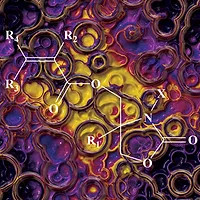Moving Ahead in Food Safety Implementation Measures for Packaging

Two years after President Barack Obama signed the Food Safety Modernization Act (FSMA), the food and beverage industries began to see the new regulatory landscape take shape. In January 2013, the U.S. Food and Drug Administration (FDA) released the first two food safety provisions stemming from the legislation. Now that the 120-day period of public comment has come and gone, manufacturers have a clearer understanding of how these proposed standards will impact their operations.
Examining the New Provisions
The first proposed rule, titled “Current Good Manufacturing Practice and Hazard Analysis and Risk-Based Preventive Controls for Human Food,” requires any producers of food intended for sale in the U.S. to identify hazards, take steps to minimize or prevent these hazards, have a written food safety plan, develop monitoring procedures, implement methods for recording results and have contingency plans in writing.
The second proposed rule, titled “Standards for the Growing, Harvesting, Packaging and Holding of Produce for Human Consumption,” sets enforceable safety standards for the production and harvesting of produce on farms, requiring them to identify routes of microbial contamination—including water sources, animal health and hygiene, equipment, tools and buildings.
This is just a simplified look at these provisions. In reality, food and beverage manufacturers may need to dedicate significant time and resources to ensure compliance with modified regulations derived from the 2011 legislation. For example, while players in the dairy, seafood, juice and protein industries already have steps in place to meet these sorts of provisions, producers of low-moisture and dry foods such as baked goods, snacks, confectionery products and produce are less equipped to do so. This isn’t because their current food safety measures are subpar by today’s standards, but simply because they have not been subjected to as many stringent regulations surrounding microbiological and allergen inspections.
These new regulations mark the first time that packaging operations will come under the regulatory microscope in a significant way. Although manufacturers may comply with current regulations, they may have farther to go to ensure their documentation, equipment and training will pass muster, particularly in regard to packaging.
Documentation
Under new FSMA rules, manufacturers must identify hazards, articulate a strategy for prevention and have contingency plans in the event of contamination. Additionally, they must demonstrate that these plans include the preventive measures of their suppliers. For many producers, this requires an upgrade to their track-and-trace capabilities and, often, a whole new approach.
The challenge in meeting newly proposed regulations on reporting structures is that manufacturers and their suppliers aren’t always speaking the same language. The databases of different supply chain partners often don’t share data easily. This means additional measures need to be built in for translation, which extends, rather than streamlines, the conversation.
To mitigate this issue, FDA requires companies to maintain a one-up-one-down link with suppliers and customers to provide a path for resolving potential issues quickly and efficiently. These new provisions explore the possibility of having manufacturers readily provide data all the way up and down the supply chain. To do this, all parties must speak the same language—databases need to communicate.
This is especially true for produce manufacturers. Documenting the collection of produce and how it travels from farm to fork is very challenging. In addition to being able to identify potential contamination hazards, produce growers and processors will need to consider the feasibility of implementing systems to identify the origin of their products down to the field and collection date. Here again, suppliers of these technologies can provide guidance on solutions that can work without hindering efficiency.
Adding to the challenges for all manufacturers is the change from a tidy, linear supply chain to an increasingly complex “supply web,” woven from the growing amount of materials, equipment, ingredients and services sourced from multiple suppliers in multiple locations that must seamlessly merge into the many variations of the final product demanded by the marketplace.
Cloud-based solutions can help manage these challenges by linking different databases along multiple radiating threads and streamlining access to information the manufacturer needs. Although the sensitive nature of production data may cause some companies to hesitate before moving to the cloud, advancing security measures help make the technology more palatable.
Two-dimensional (2-D) bar codes are also attracting manufacturers’ attention for their ability to retain more information. While one-dimensional bar codes offer SKU data, 2-D bar codes enable manufacturers to embed more details to track product and ingredient origins. The availability of more information than on a single bar code could greatly advance a manufacturer’s track-and-trace capabilities. However, many retailers have not yet adopted 2-D bar code scanners, presenting a bottleneck at a critical point in the supply web.
Equipment
New provisions under FSMA contain no grandfather clause for existing equipment. All equipment must be brought up to code. Manufacturers seeking to minimize potential sources of microbiological contamination must eliminate surface areas where water or product can collect and ensure equipment can be thoroughly cleaned and sanitized.
The prevention of cross-contact provides another important reason to advance the sanitation—as well as the modularity—of equipment. Food allergies, such as intolerances to gluten, peanuts and dairy, can be dangerous and sometimes fatal. For manufacturers that produce multiple products or flavors using different ingredients that may include gluten, dairy, etc., modular components can be a timesaving solution for making the grade.
Companies looking to maintain their existing equipment should collaborate with suppliers on upgrades and seek guidance on ways to streamline enhancements that comply with new regulations. Suppliers can also be effective resources of recommendations for new equipment purchases.
It is critical to note that the reach of FSMA’s provisions comprises both the processing line and packaging operations. As a result, a number of industry groups have stepped up to provide guidance specific to packaging operations. For example, the SQF Code, from the Safe Quality Food Institute, is a Hazard Analysis and Critical Control Points (HACCP)-based food safety and quality management system that utilizes the U.S. Department of Agriculture’s National Advisory Committee on Microbiological Criteria for Food and the CODEX Alimentarius Commission HACCP principles and guidelines.
Training
Changes to equipment and sanitation standards will also necessitate changes to the training of operations teams. Anyone with access to the production line must not only be aware of upgrades or new technologies, but also how to operate them. Workers must be trained in what to look for when inspecting for potential sources of microbial contamination or allergen residues. Again, suppliers can provide valuable guidance on maximizing the efficiency of this process and ensuring compliance with direct training and on-site support.
Updated signage and instructions make up another critical aspect to properly equipping the workforce for compliance with the new rules. These materials should be consistently and comprehensively aligned with the new standards. The Alliance for Innovation and Operational Excellence, founded by PMMI, has a solutions group focused on guidance documents to support a uniform interpretation of regulations across food and beverage manufacturers.
Conclusions
FSMA is taking hold. As these new regulations address the changes that are needed for packaging operations, manufacturers may have farther to go to ensure their documentation, equipment and training will be sufficient to guarantee compliance. Guidance and support from their suppliers can go a long way—and get them there quicker.

Looking for quick answers on food safety topics?
Try Ask FSM, our new smart AI search tool.
Ask FSM →








